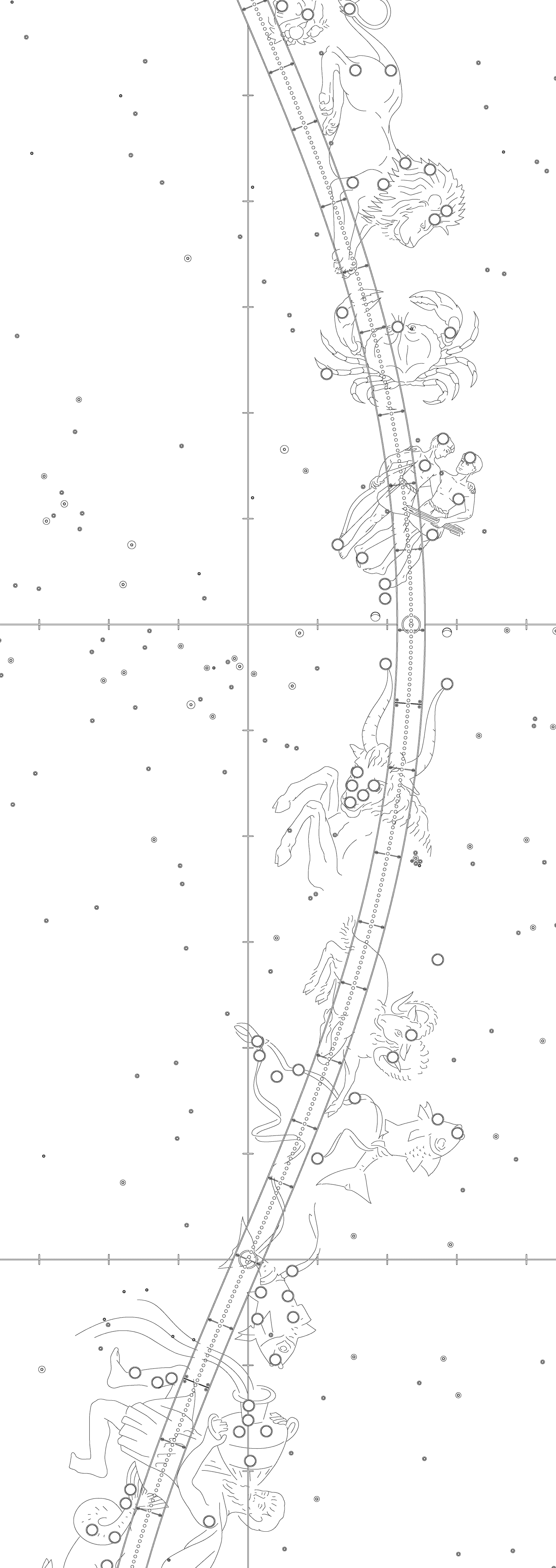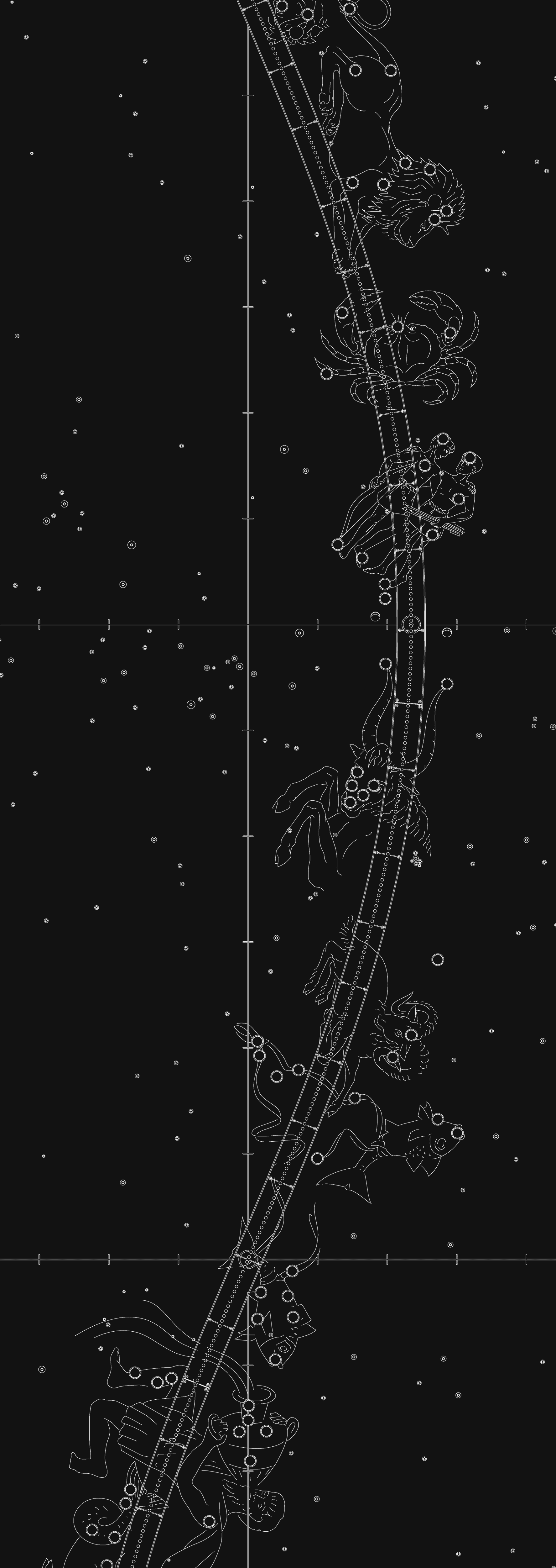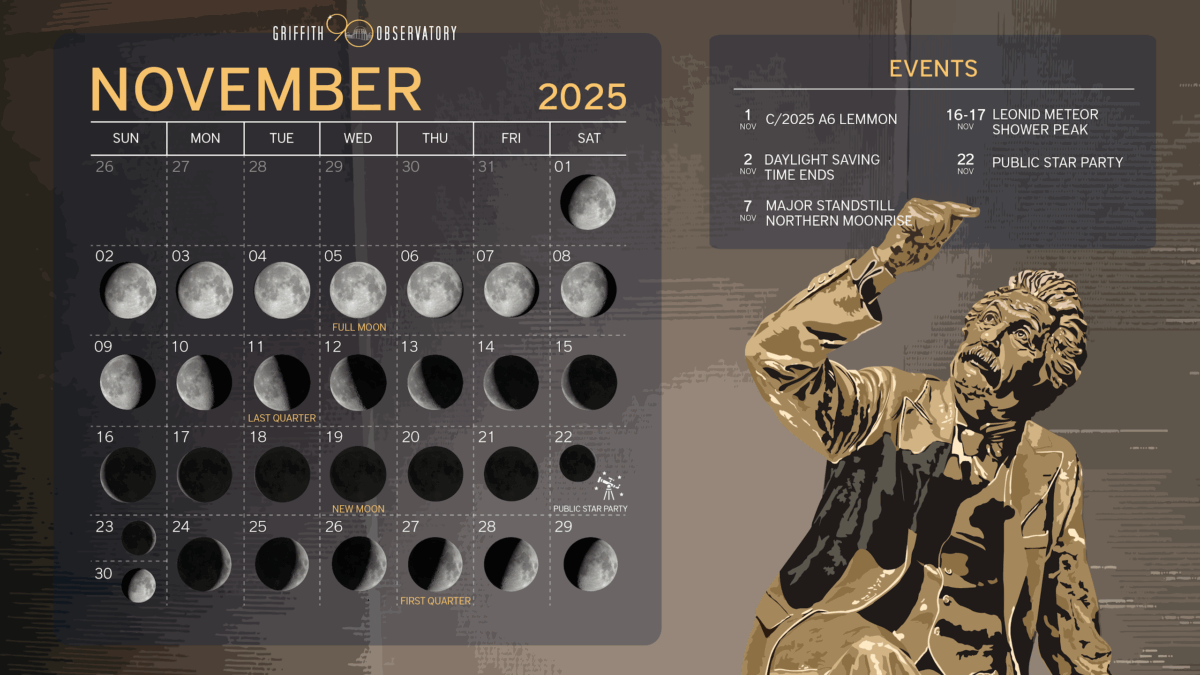Sky Report
This is the monthly Griffith Observatory Sky Report. You may read or listen to it below.



Sky Report
November, 2025
This is the Griffith Observatory Sky Report for the period between November 1 and November 30, 2025. Here are the events happening in the sky of southern California.
Mercury sets in the west-southwest at 7:04 p.m., PDT, on the 1st, and the sun sets at 6:00 p.m., PDT. The planet is 58-percent illuminated and 6.9 arcseconds wide. After the 1st, Mercury is close to the sun and is not safe to observe. On the 25th, Mercury rises in the east-southeast at 5:39 a.m., PST, and the sun rises at 6:36 a.m., PST. Mercury’s disk is 9.0-percent illuminated and 9.4 arcseconds wide. On the 30th, Mercury rises at 5:11 a.m., PST, and the sun rises at 6:40 a.m., PST. The planet is 31-percent illuminated and 8.2 arcseconds wide. Do not observe any planet when it comes close to the sun, for the danger to the eyes is great.
Venus rises in the east at 5:56 a.m., PDT, on the 1st, and the sun rises at 7:13 a.m., PDT. The planet is 96-percent illuminated and ten arcseconds wide. On the 30th, Venus rises in the east-southeast at 5:57 a.m., PST. The planet is 99-percent illuminated and 9.9 arcseconds wide. A small telescope with a magnification of 100x will show the disk.
Mars sets in the west-southwest at 6:56 p.m., PDT, on the 1st. The planet is close to the sun and is not safe to observe.
Jupiter, on the 1st, rises in the east-northeast at 10:50 p.m., PDT. On the 30th, the planet rises at 7:54 p.m., PST. Jupiter is 44 arcseconds wide. A telescope capable of magnification 50x will show the Red Spot, and the four bright Galilean moons can be seen moving back and forth, across and behind Jupiter.
Saturn, on the 1st, sets in the west at 3:50 a.m., PDT. On the 30th, Saturn sets at 12:53 a.m., PST. The rings and Saturn’s largest moon, Titan, can be seen with a telescope capable of magnification 50x.
Uranus, on the 1st, rises in the east-northeast at 7:00 p.m., PDT. On the 30th, Uranus rises at 4:01 p.m., PST. On the 15th, Uranus is at Right Ascension 3h 50m 17s and declination +19° 53ʹ 12ʺ. A magnification of 150x or more is needed to see the planet’s 3.8-arcsecond disk.
Neptune, on the 1st, sets in the west at 4:10 a.m., PDT. On the 30th, Neptune sets at 1:14 a.m., PST. On the 15th, Neptune is at Right Ascension 0h 0m 32s and declination -1° 25ʹ 37ʺ. A magnification of 150x or more is needed to see the planet’s 2.3-arcsecond disk.
Full moon is on the 5th, last quarter on the 11th, new moon on the 19th, and first quarter on the 27th.
SPECIAL EVENTS
Daylight Saving Time ends on Sunday, November 2, at 2:00 a.m. All clocks must be set back one hour, according to the saying, “Spring forward, fall back.”
In the major lunar standstill of 2024-2025, the November northernmost moon rises in waning gibbous phase on the 7th at 6:44 p.m., PST, and sets on the 8th at 10:12 a.m., PST. Griffith Observatory will livestream broadcast this northernmost moonrise. The November southernmost moon rises as a waxing crescent at 8:58 a.m., PST, on the 22nd and sets at 6:26 p.m., PST. Griffith Observatory will not broadcast this southernmost moonset. For details on the major lunar standstill, please visit the website at https://griffithobservatory.org/extreme-moon-the-major-lunar-standstills-of-2024-2025/
The Leonid meteor shower peaks from the evening of the 16th through to the morning of 17th. The shower is named after the constellation of Leo the Lion, where the meteors appear to originate. The Leonids usually produce ten meteors per hour with many bright meteors. The moon rises in the early morning sky, 10-percent illuminated, and will not interfere with observation this year. The parent object is the comet 55P/Tempel-Tuttle.
The Northern Taurid meteor shower peaks from the evening of the 8th to the morning of the 9th. The shower is named after the constellation of Taurus the Bull, where the meteors appear to originate. The moon rises in the late evening sky, 83-percent waning gibbous, and will interfere with observations. The parent object is the comet 2P/Encke. The Northern Taurids might produce ten to 20 meteors per hour, with occasional fireballs.
The Southern Taurid meteor shower peaks from the evening of the 4th through to the morning of the 5th. The shower is named after the constellation of Taurus the Bull, where the meteors appear to originate. The moon is a 96-percent waning gibbous and will interfere with observations. The parent object is the comet 2P/Encke. The Southern Taurids rarely produce more than five meteors per hour, but many are bright fireballs.
Follow All Space Considered and Griffith Observatory on Facebook, Instagram, YouTube, and Twitter for updates on astronomy and space-related events.
YouTube Sky Report
Lunar Calendar

November 1st to the 5th shows the Moon waxing which means more of its surface is illuminated. The Full Moon on the 5th ends this cycle. Starting from the 6th on, the Moon is waning. The First Quarter is on the 27th, and the Last Quarter is on the 11th. November 19th marks the New Moon.